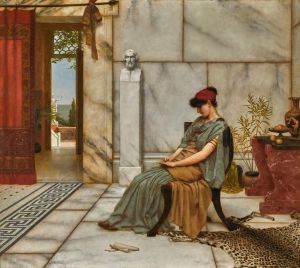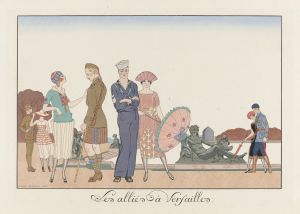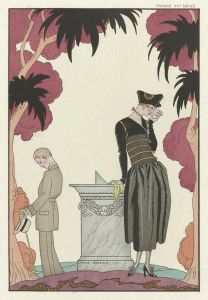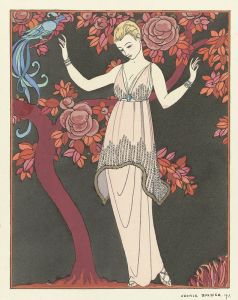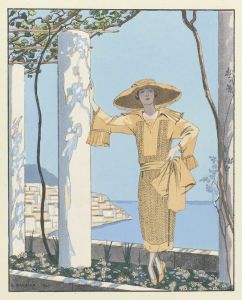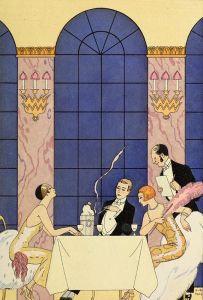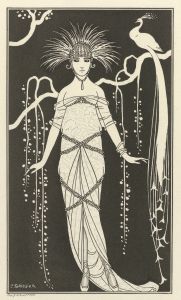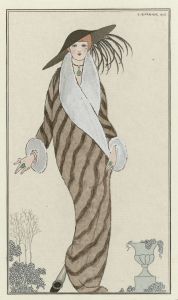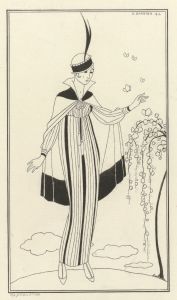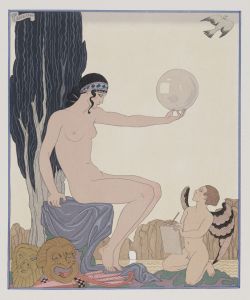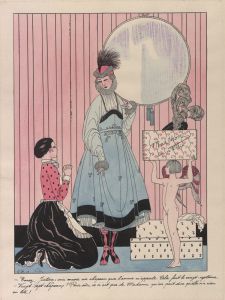
Falbalas et fanfreluches, La Luxure
A hand-painted replica of George Barbier’s masterpiece Falbalas et fanfreluches, La Luxure, meticulously crafted by professional artists to capture the true essence of the original. Each piece is created with museum-quality canvas and rare mineral pigments, carefully painted by experienced artists with delicate brushstrokes and rich, layered colors to perfectly recreate the texture of the original artwork. Unlike machine-printed reproductions, this hand-painted version brings the painting to life, infused with the artist’s emotions and skill in every stroke. Whether for personal collection or home decoration, it instantly elevates the artistic atmosphere of any space.
"Falbalas et fanfreluches, La Luxure" is an illustration by the renowned French artist George Barbier, who was a prominent figure in the world of early 20th-century fashion illustration. Barbier, born in 1882 in Nantes, France, became one of the most celebrated illustrators of his time, known for his exquisite Art Deco style that captured the elegance and sophistication of the era.
The illustration "La Luxure" is part of a series titled "Falbalas et fanfreluches," which translates to "Ruffles and Frills." This series was a collection of fashion illustrations published annually between 1922 and 1926. Each edition of "Falbalas et fanfreluches" was a luxurious almanac that showcased Barbier's artistic talent and his keen eye for fashion trends. These works were highly sought after by fashion enthusiasts and collectors alike, as they encapsulated the spirit and style of the Roaring Twenties.
"La Luxure," which translates to "Lust," is one of the thematic illustrations within this series. Barbier's work often explored themes of beauty, sensuality, and the opulence of contemporary fashion. His illustrations were characterized by their vibrant colors, intricate details, and a sense of theatricality that brought the fashion of the time to life. "La Luxure" exemplifies these qualities, presenting a scene that is both alluring and sophisticated.
Barbier's style was heavily influenced by the Art Deco movement, which was characterized by its emphasis on geometric shapes, bold colors, and lavish ornamentation. This movement was a reaction against the more organic forms of Art Nouveau, and it celebrated modernity and luxury. Barbier's illustrations, including "La Luxure," often featured elegantly dressed figures in fashionable attire, set against stylized backgrounds that highlighted the glamour and decadence of the period.
In addition to his work on "Falbalas et fanfreluches," George Barbier collaborated with various fashion designers, theaters, and publications. He contributed to magazines such as "Vogue" and "Gazette du Bon Ton," and his illustrations were instrumental in popularizing the fashion and aesthetic of the 1920s. Barbier's influence extended beyond fashion illustration; he also designed costumes for the Ballets Russes and worked on set designs for theater productions.
Barbier's legacy as an artist is marked by his ability to capture the essence of an era defined by its pursuit of beauty and pleasure. His work remains a testament to the creativity and innovation of the Art Deco period, and his illustrations continue to be celebrated for their artistic merit and historical significance.
"La Luxure" and the "Falbalas et fanfreluches" series are important cultural artifacts that offer insight into the fashion and artistic trends of the early 20th century. Through his illustrations, George Barbier not only documented the styles of his time but also contributed to the visual language of fashion and art that continues to inspire designers and artists today.






